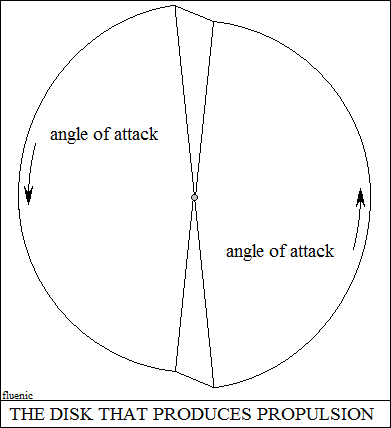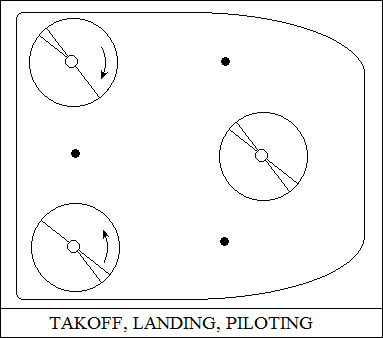A new type of aircraft.
The absolute novelty is the appearance and the propulsion, which takes
off
and lands vertically, without propellers, wings and empennage, but flies
like
an airplane. Aircraft flight, in the key of the materialist conception,
is
considered an interaction with atmospheric air, hence the name aircraft.
In reality, air, atmospheric gas are structures of vector properties,
of vector
space are components of vector space, therefore, ships interact with vector
space and its components. Objects of nature are structures composed of
interactions of vector properties, with vector space. The interactions
of the
vector properties in the photosphere of the sun, decompose hydrogen into
vector space (maximum oscillations) and vice versa, compose with the vector
space hydrogen atoms (minimum oscillations), alternating every 11 years.
The movement of colored images on the screen are interactions of vector
properties with the visual sense, with thinking and speech. Returning
to the
new aircraft, the vertical and horizontal propulsion is designed to interact
with the density of the oriented vector space. This action is produced
by the
new functional structure of the propulsion system. The new structure is
a
sheet metal disk, with a diameter of 5 m, rotated by an electric motor.
The motor action can also be performed directly on the contour of the
disk.
On each half of the disk is pressed a slope, an angle of attack of 7-8
degrees
with respect to the plane of rotation, specifically adapted to the interaction
with vector space. The two slopes follow each other continuously like
two
waves, but they are neither propeller blades nor airplane wings. The fact
that
the disc is made of large-diameter sheet metal requires reinforcement.
As shown in the drawing, the disc is surrounded by a 15.7 m strip of the
same sheet metal, the inner edge is straight and surrounds the disc in
the
plane of rotation, the other edge follows the wavy edge of the disc.
A double cone disk is glued to the straight edge of the strip, the second
cone forms the place where the electric motor is connected, through two
concentric flanges. Two metal arms ending in hinges connected to the ship's
structure are attached to the motor. The hinges allow the motor-disk
assembly to tilt vertically or horizontally plus or minus 5 degrees, necessary
for piloting. The rotation of the disk orients the parallel vector space
in the
direction of rotation, thus developing repulsive forces, which decreases
the
orientation density of the space and implicitly decreases the weight of
the ship.
The source of electrical energy required to power the engines is produced
by a generator set fixed in the aircraft.
When landing, the ship rests on three
sliding legs. The realization of the aircraft is conditioned by the
optimization, through testing, of the performance of the propelling disk.
The shape and dimensions of the aircraft are shown in the drawing.
Piloting.
The vertical thrusters are fixed without hinges and actively required
during
takeoff, landing and short horizontal turns, by the intensity of the force.
The horizontal thrusters are actively required, for speed and orientation
up,
down, right, left. Up and down by tilting the middle thruster vertically,
right and left by tilting the edge thrusters horizontally, both in angle
and in force intensity. Piloting should be a pleasure.
If the gyroscopic phenomenon opposes the inclination
of the rotation plane, the hinges are dispensed with,
the vertical thrusters can perform the piloting function.




